Day: 30-31 Km Travelled: 674.76km Steps: 20 322 Location: Glasgow, Scotland
October 9th-10th, 2017
Three cheers for cheap European flights! For less than the price of a meal at a restaurant, I flew from London, England to Glasgow, Scotland. An hour bus ride later and I arrived to my tartan-themed room after dark (I was in the ‘Auld Lang Syne’ tartan room, honouring its author, Robert Burns). Luckily, a late night Chinese food restaurant around the corner offered takeout. Greasy, deep-fried goodness was just what was needed after a long travel day!
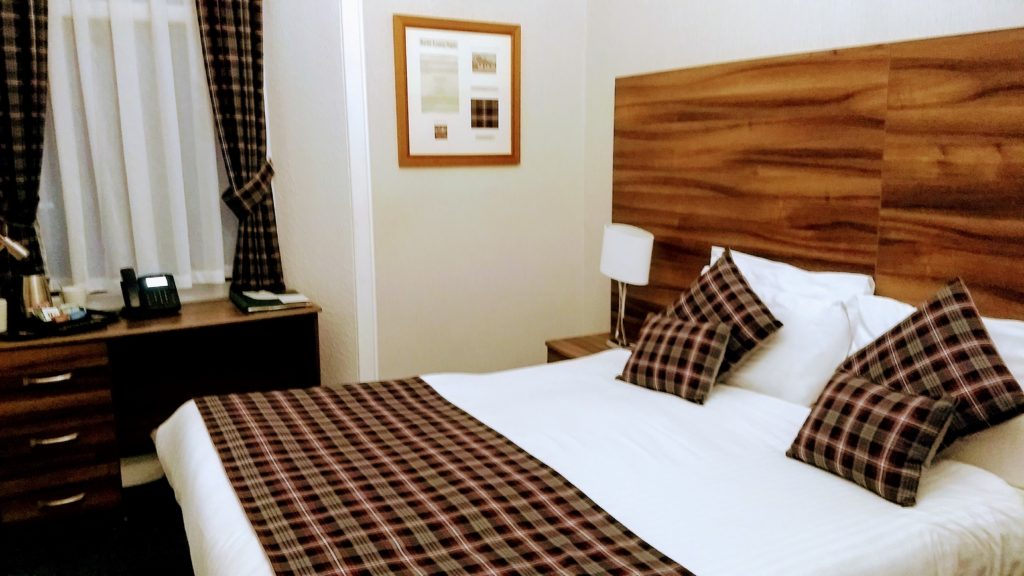
I spent a few days exploring the city of Glasgow. Though Scotland’s largest city, it is not its capital – that would be the more historic Edinburg. Glasgow’s population is approximately 1,800,000 Glaswegians, accounting for 33% of the country’s population. Although it had been settled by various groups for a millennia (including the Romans), the city proper owes its origins to Saint Mungo, a Christian missionary in the 6th century. Situated on the river Clyde, the UK’s ‘Second City’ was known for its reputation as ship builders. There’s an expression still used today that gives a nod to this esteemed past: “It’s Clyde built”. The locals like to joke that if they, and not neighbouring Edinburg, had built the Titanic, it would not have sunk.
The city centre is a bustling quarter with numerous shops, restaurants and pubs as well as the city’s main cultural attractions. The main thoroughfare, Buchanan Street, is a pedestrian only haven for souvenir shops, chain restaurants and upmarket shopping.
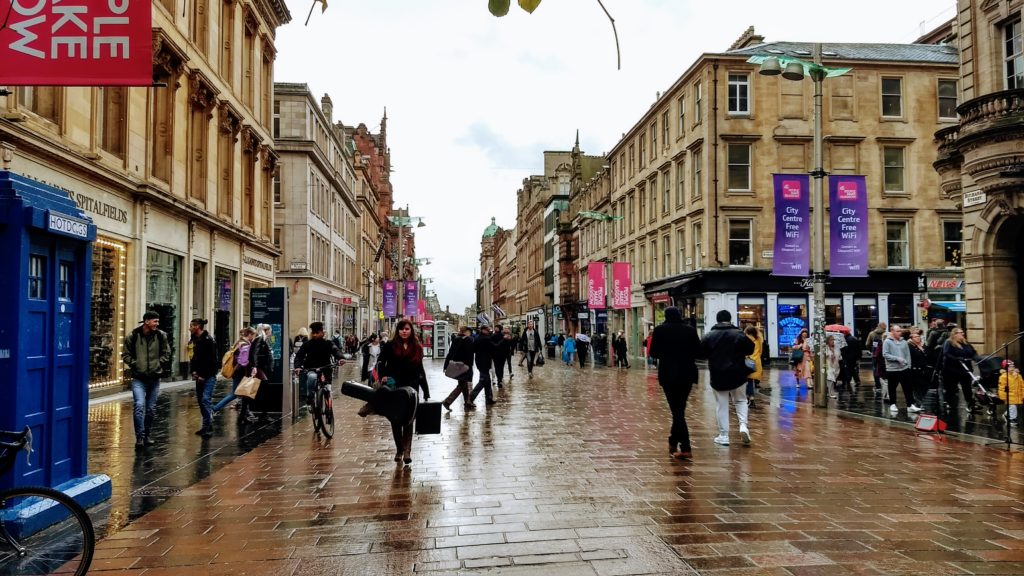
The principal civic square, George Square, was laid out in 1781. Several significant buildings frame the square, such as the Glasgow City Chambers. There are 12 statues in the square, all featuring prominent figures in Scottish history.
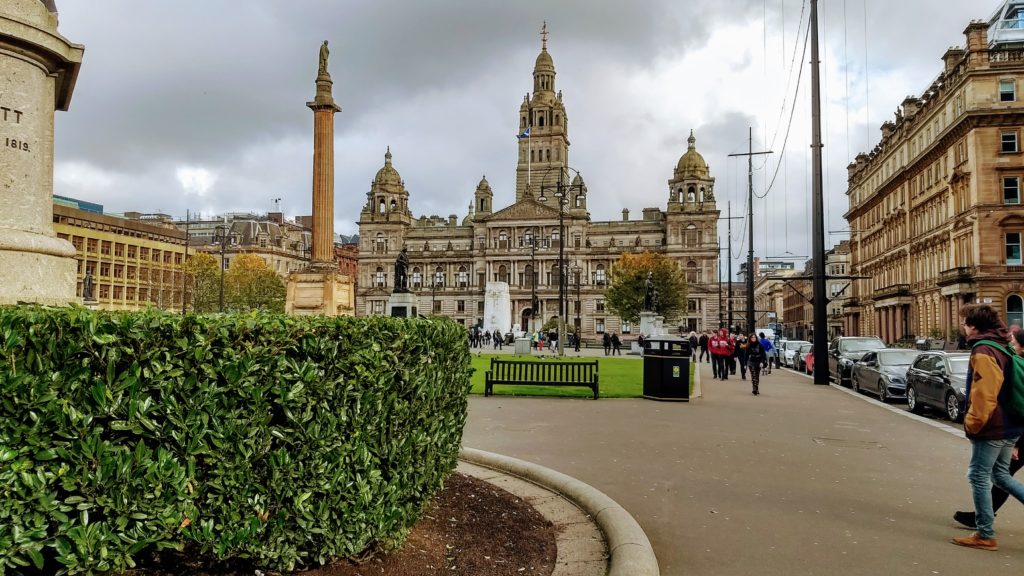
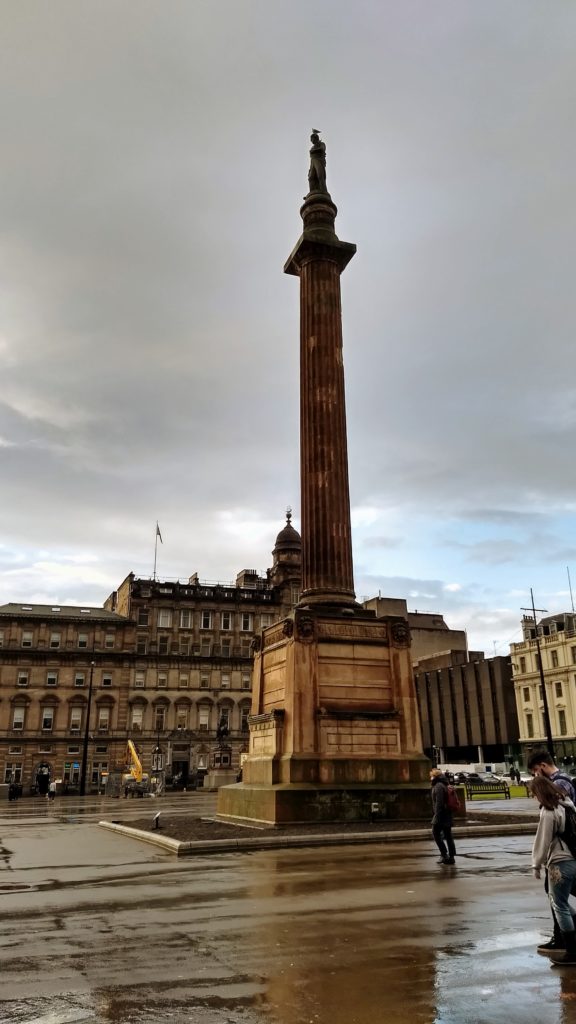
Mounted on an 80 foot pedestal, one statue literally stands above the rest: the monument to Sir Walter Scott. Scott is likely one of the most beloved figures in Scottish history. There are statues and monuments to him in several parts of the country. He is credited with making Scotland “cool”. In early Victorian times, high society often regarded Scots as ‘barbaric’ and a visit to the Highlands would likely be viewed as a punishment and not a prime vacation destination. Through his poems such as Lady of the Lake and many novels, Sir Scott romanticized Scotland and the Highlands especially. This led to an influx of Victorian making their way trough the countryside to experience a little bit of the life that Scott wrote about. Queen Victoria herself even visited The Highlands, as the area was now fashionable. Walter Scott is often referred to as “Scotland’s image-maker”. Sadly today, while most Scots are familiar with the man himself, his most famous works are almost forgotten.
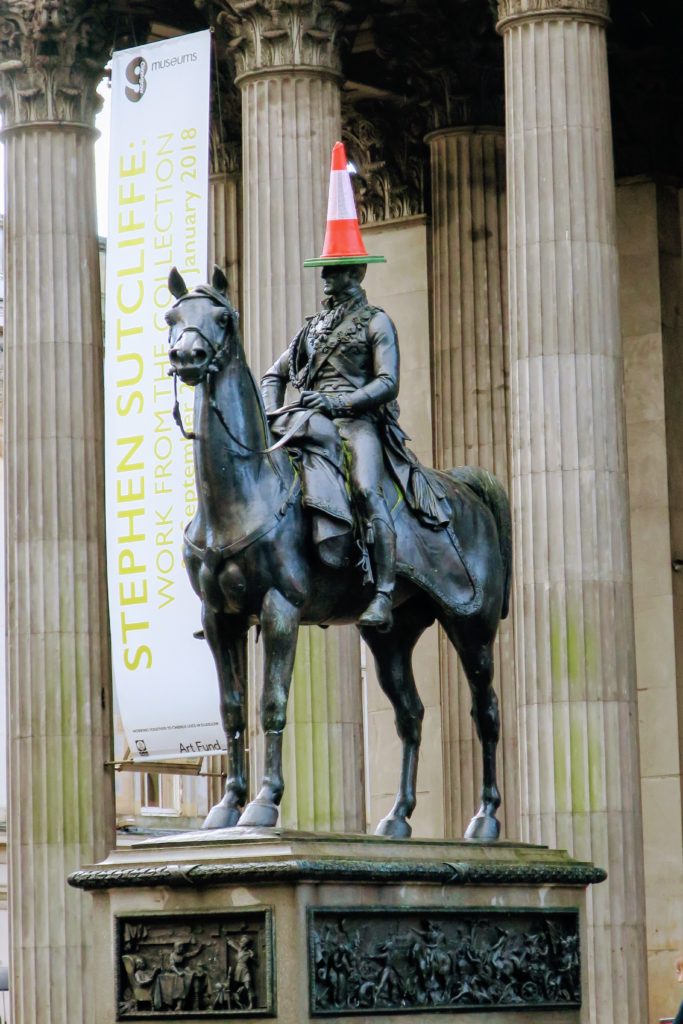
Glasgow’s most famous statue is not found amongst these prominent men and women. And its claim to fame is not its subject matter but a controversial and quirky modern addition. Field Marshal Arthur Wellesley, the 1st Duke of Wellington was hailed a British military hero for his defeat of Napoleon at the Battle of Waterloo. An equestrian statue was erected in 1844 and sits in front of the current Gallery of Modern Art. However, the statue started to slowly gain iconic status in the 1980’s when the city’s population awoke one morning to find the Duke with a new accessory atop his head: an orange traffic cone. The culprit was never found, although speculation abounds that it was likely an inebriated student, and the cone was dully removed. A few days later, the cone reappeared atop the statue’s head. On and on this went, until a few years ago when the city council reached the limit of their patience, not to mention city budget. The city council estimated the removal of the cone costed tax payers £10,000 a year. It proposed a £65,000 restoration project in which the platform height would be doubled in order to deter any would-be vandals. The public was widely opposed and an online petition as well as a Facebook campaign (called “Keep the Cone”, it accumulated more than 72,000 likes within 24 hours) were created. The city council finally abandoned the plan, along with routine of removing the cone. Today, it is one of Glasgow’s iconic sites and is featured on everything from postcards to promotional videos. The locals now claim that it represents the humour of the local population, which makes for a more enjoyable story.
My only complaint about this eclectic and vibrant city: the bus system. Most cities I’ve visited had some sort of ticket system for public transportation. You could either pay the fare in the bus or buy a discounted ticket ahead of time. In Glasgow however, the only option is to pay the driver directly, at a variable price. In theory, the fare is calculated based on your destination, meaning the further you go, the more expensive it will be. In practicality, however, the fare is solely based on the driver’s discretion and appears to vary greatly per driver. I took the bus 2 days in a row with the same pickup / destination points and the fare differed by over 1 euro! Sheesh!  A little bit of home…. Europe’s first and only Tim Horton, opened in Glasgow a few months before my arrival. As the old saying goes: A double double a day keeps the homesickness away!
A little bit of home…. Europe’s first and only Tim Horton, opened in Glasgow a few months before my arrival. As the old saying goes: A double double a day keeps the homesickness away!
